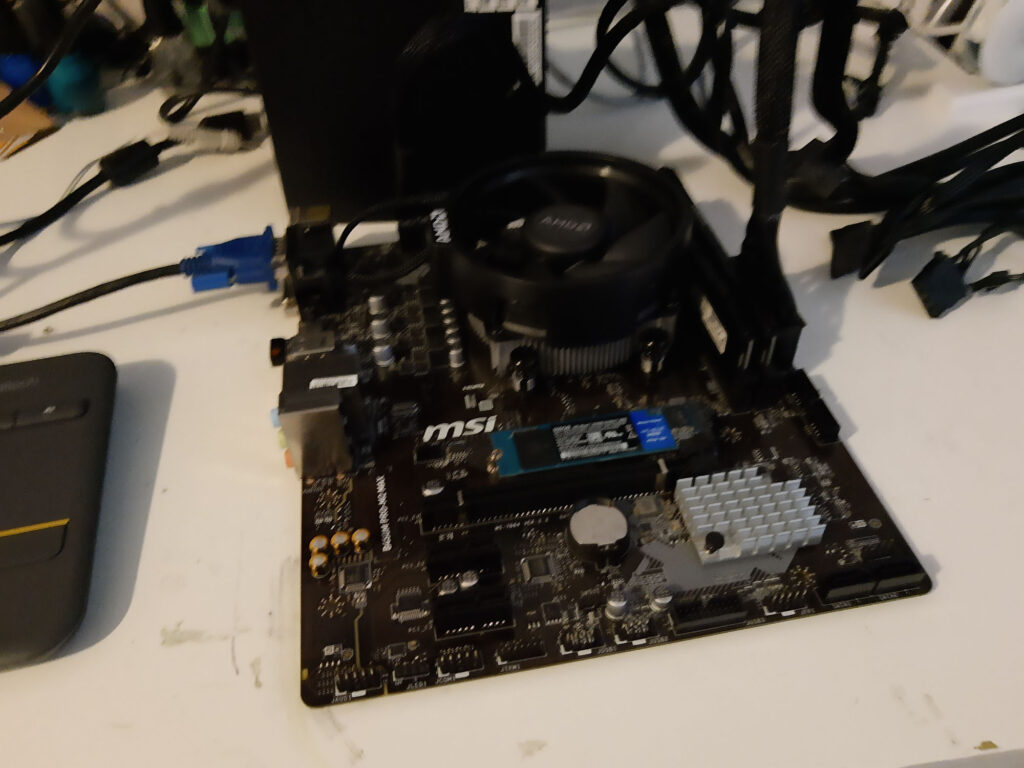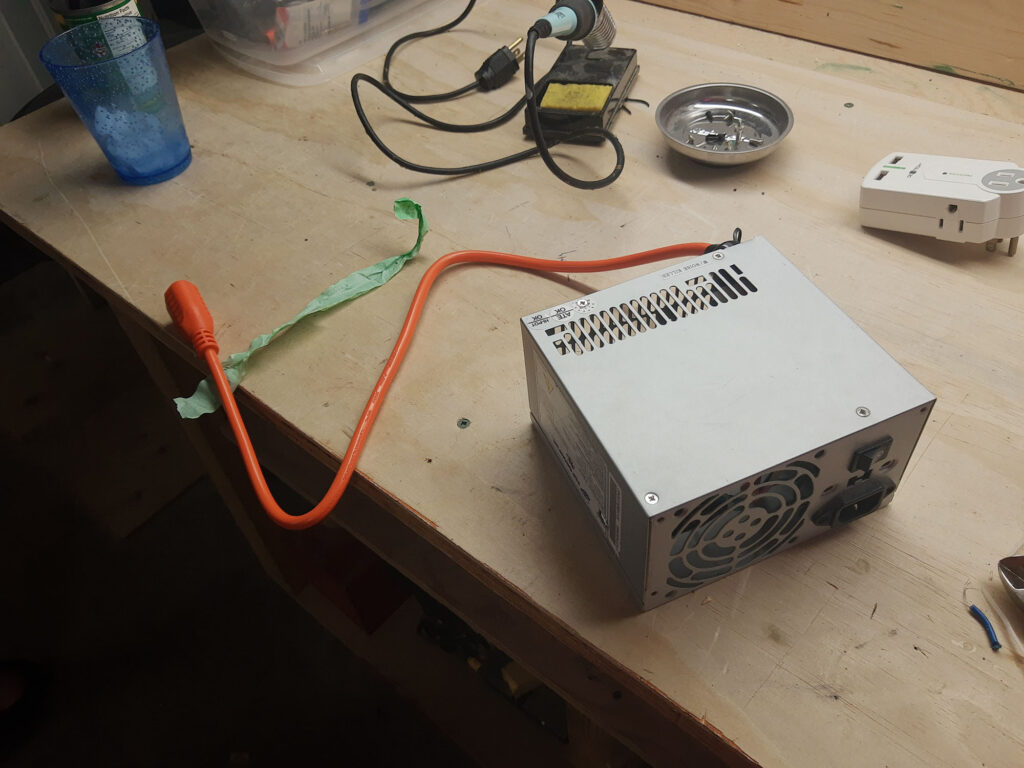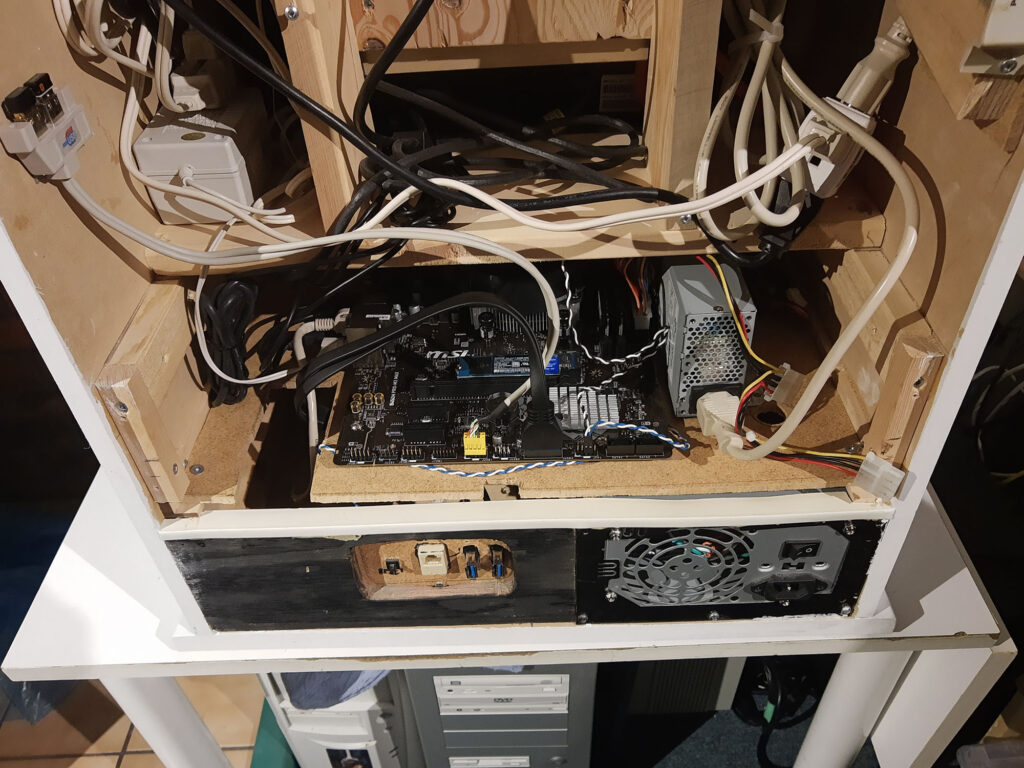Candytop was upgraded for the second time in mid-2021. This upgrade had actually been planned for the previous year but had not happened for various reasons. Windows 7 had reached end-of-life in 2020 and I figured it was a good time to overhaul the hardware again, upgrading it to something much newer and addressing some minor issues.
For the first time, the core hardware was replaced with all-new parts. This consisted of a Ryzen 3 3200G on an MSI B450M-A PRO-M2 MAX motherboard, with a 500GB Western Digital SN550 SSD onboard. The Ryzen APU platform was chosen early on because low-profile videocards (a full-height one will not fit) were expensive and difficult to find. The motherboard and SSD are probably overkill, but were only a little more expensive than bargain-basement options. I would have preferred a faster and newer APU, perhaps a Renoir-based 4350G, but the 3200G was inexpensive and readily available.
The wifi dongle was upgraded to a newer unit that supports 802.11ac. It’s still a cheap, small dongle connected through USB 2.0. Where the cab currently sits, ethernet is available, and it doesn’t really need a fast network connection past initial setup anyway.
A few minor and one major change was made to the back panel. The back USB ports were replaced with USB 3.0 ports using a neat cable from Amazon and a lot of No More Nails construction adhesive. A cover was added to the top fans- we don’t have any for the lower fans yet. And the old power supply was finally replaced, with the AC side now wired rather differently.
The old power supply was a gross hack, though done a little better than I had remembered. It was a normal PC power supply, and fed the computer parts as one, but also had part of an extension cord hacked in past the power switch to power the rest of the cab. The new setup uses a small mini-ITX power supply on the motherboard tray, mounted with velcro, a bracket, double-sided tape and hope, and the old power supply was gutted and turned into basically a glorified junction box. Unfortunately, the old extension cord was too short and a new one had to be purchased.
Software-wise, not much was upgraded aside from the OS. Windows 7 was out of support by this time and was replaced by Windows 10. Most of the software was literally copied over. Kodi is once again the front end- a version that is now heavily outdated. A few games were removed that did not work, a few tweaks to emulator settings were made. To be honest, most of this was done out of expedience and I’m not overly happy with the result. I’m not sure whether I want to clean up the current setup a bit or scrap it and start over (perhaps with a different launcher) in the future.
One major issue cropped up which nearly torpedoed the entire project was the USB gamepads randomly switching precedence. This is a big problem, because most of the software relies on the player 1 controller being the first controller. Unfortunately, this seems to be a known issue with no known software solution. I ended up just setting it up the way it currently was and crossing my fingers it doesn’t switch too often.
In general, I’m happy with the new hardware but not the software setup. The new computer is fast, modern, and even has an easy upgrade path in the form of Ryzen 5000G Cezanne. The new USB 3.0 ports are convenient, and the wifi has finally been upgraded to 802.11ac (though it’s still a cheap dongle). The questionable power supply arrangement has been replaced with something a lot cleaner. On the other hand, while the OS is supported and (mostly) secure, the frontend is dated, the emulators are old and have issues, and some of the romsets are very limited. The native PC game selection is smaller than it was before, and one of my favourites- OpenTyrian- does not work properly.
Another upgrade is already planned tentatively for the end of 2021. This will address the controller switching issue with a gross hardware hack, clean up the software a bit, and add a few more PC native games.




